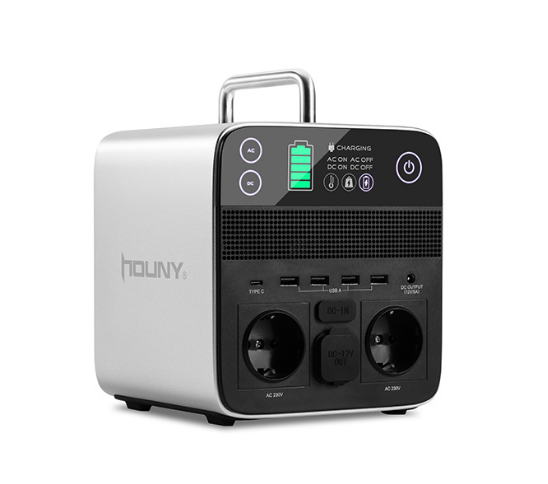Choosing a portable power station for camping requires careful consideration of various factors to ensure it meets your specific power needs and camping requirements. Here are some key factors to consider when selecting a portable power station:

Portable Power Station for Camping 250W
The power capacity of a portable power station determines how much electrical energy it can store and supply. Consider the power requirements of your camping equipment and devices to estimate the capacity you'll need. Look for a power station with sufficient capacity to meet your energy needs for the duration of your camping trips. Keep in mind that the capacity is typically measured in watt-hours (Wh) or ampere-hours (Ah), so consider the energy consumption of your devices and choose a power station with a suitable capacity.
Assess the power outputs provided by the portable power station. Look for a variety of output options, such as AC outlets, DC ports, USB ports, and USB-C ports. This ensures compatibility with a wide range of devices, including laptops, smartphones, tablets, cameras, portable fans, and camping lights. Ensure that the power station offers enough outlets and ports to charge or power all your essential devices simultaneously.
If you plan to use AC-powered devices, check whether the power station has a built-in inverter. An inverter converts DC power (stored in the power station's battery) into AC power. Look for a pure sine wave inverter as it produces clean and stable power, suitable for sensitive electronics. Modified sine wave inverters are less expensive but may not be suitable for certain devices.
The type of battery used in the power station affects its weight, capacity, and performance. Lithium-ion batteries are commonly used in portable power stations due to their high energy density, lightweight, and longer lifespan. Check the battery capacity (in watt-hours or ampere-hours) to determine how long it can power your devices. Consider whether the power station allows for battery expansion or replacement if you anticipate the need for additional capacity in the future.
Evaluate the available recharge options for the power station. Most portable power stations can be recharged through AC outlets, DC car sockets, and solar panels. AC outlets are convenient for charging at home or in campsites with electrical hookups. DC car sockets allow you to recharge while driving or using a car battery. Solar panel compatibility provides an eco-friendly and off-grid charging option. Ensure that the power station supports the recharge method that suits your camping style and environment.
Consider the charging time required to replenish the power station's battery. This can vary based on the capacity of the power station and the recharge method used. Look for power stations with fast charging capabilities if you need to recharge quickly between camping trips. Keep in mind that solar charging may take longer, depending on the solar panel's wattage and available sunlight.
As you'll be carrying the power station during camping trips, consider its weight and portability. Look for a compact and lightweight design that won't add excessive bulk to your camping gear. Some power stations come with handles or carrying straps to make transportation easier. Balance the capacity and features you need with the weight you're comfortable carrying.
Camping often involves exposure to outdoor elements, so choose a power station that is durable and weather-resistant. Look for models with sturdy construction and features such as impact-resistant casing, water resistance, and dust protection. These qualities ensure the power station can withstand rugged camping conditions and continue functioning reliably.
Consider any additional features that may be useful for your camping needs. Examples include built-in LED lights, LCD screens for monitoring battery status, integrated USB charging cables, multiple charging modes, and built-in safety features like surge protection and temperature control.
Set a budget for your portable power station for camping. Prices can vary significantly based on the power capacity, battery type, brand, and additional features. Consider the long-term value and quality when comparing prices. It's generally recommended to invest in a reliable and high-quality power station that meets your needs, even if it means spending a little more.
In conclusion, selecting the right portable power station for camping involves considering factors such as power capacity, power outputs, inverter type, battery type and capacity, recharge options, charging time, weight and portability, durability and weather resistance, additional features, and budget. By carefully assessing these factors and matching them to your camping requirements, you can choose a portable power station that provides the necessary power supply to keep your devices charged and enhance your camping experience.
Copyright © Shenzhen Houny Battery Co., Ltd. All Rights Reserved | Sitemap | Technical Support:
